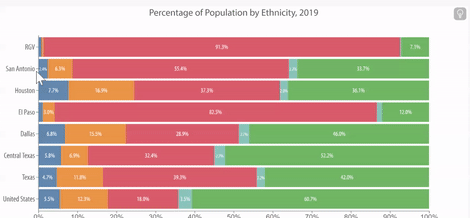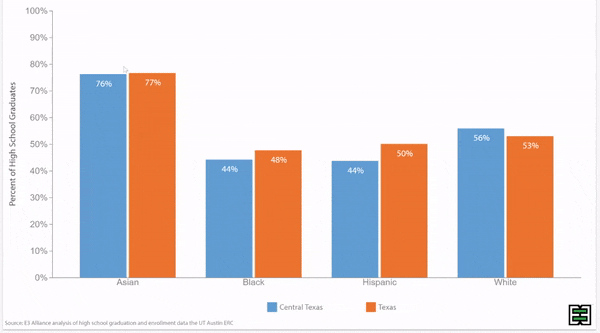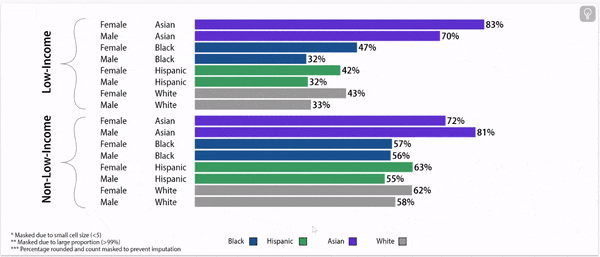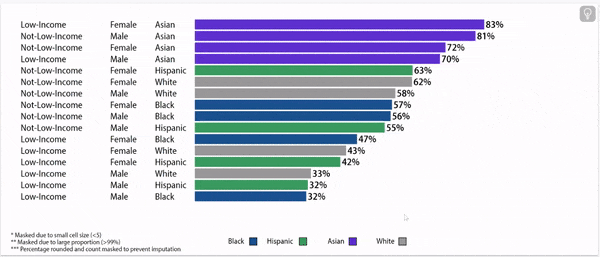School To Work | Dual Credit Profile
Enrolling in Dual Credit courses is a powerful step in a student’s readiness and matriculation into postsecondary. Dual Credit provides the student the opportunity to earn both High School and College credit simultaneously through partnerships between school districts and institutions of higher education. This credit accrual on the college side exposes the student to real college experience and can shorten time to degree as well as save valuable financial resources toward postsecondary credential completion.
Early College High Schools are high schools redesigned to provide students an opportunity to earn 60 semester college credit hours while in high school.
For more information about this data, please click here.
Dual Credits Earned: All HS vs ECHS
The charts below show the participation levels from the Senior Year cohort of 2020 for Texas and Central Texas in Dual Credit and in Early College High School. Note the percentage of students earning more than 18 semester credit hours in Texas is just under 11% for ECHS participating students.
Dual Credits Earned by District Type
Associate Degree Completion Rate by District Type
Although still small numbers, with recent policy enhancements, students across Texas have the opportunity to earn enough semester credit hours to complete an Associate’s Degree while in high school. The graph shows the percent of the Senior Year Cohort from 2020 in Texas and in Central Texas that completed an Associate’s Degree.
Disparities continue when we look at Dual Credits Earned by Income Status
Students from low-income households in Texas and in Central Texas continue to see a significantly lower number of dual credit hours earned when compared to students that are not from Low-Income households. Of note, less than 10% of students from low-income households earn more than 6 semester credit hours, compared to greater than 15% for non-low-income households.
Dual Credits Earned by Ethnicity highlights opportunity gap
Traditionally underrepresented students continue to see fewer credit hours earned both in Central Texas and across the state. Black and Hispanic Students earn fewer semester credit hours in each band of analysis (1-6, 7-12, 13-18 and 18+) as compared to White students.
High School Graduates Earning Any Dual Credit, Class of 2022
High School Graduates Earning More Than 15 Dual Credit Hours, Class of 2022
About this data:
E3 Alliance relies primarily on data from the University of Texas Education Research Center (ERC). This data allows for a longitudinal understanding of Dual Credit engagement and completion, based on where and when a student graduates from high school. This data pertains to graduates from within the state of Texas who participated in Dual Credit courses or enrolled in an Early College High School prior to graduation.
Following are items to note:
The year of the data represents the year of high school graduation and highlights the dual credit participation for the student while they were enrolled in high school. According to Texas Administrative Code, dual credit courses offered in partnerships in Texas, whether on traditional campuses or through Early College High Schools, must be either core curriculum credits or workforce-based credits. Similar to measuring postsecondary enrollment, there is a one-year lapse and a delay in data availability due to state approval within the ERC and analysis time. As such, if you choose to explore data from Central Texas, the graphs below present Dual Credit and Early College High School Participation and completion from the class of students that graduated high school in 2020.






